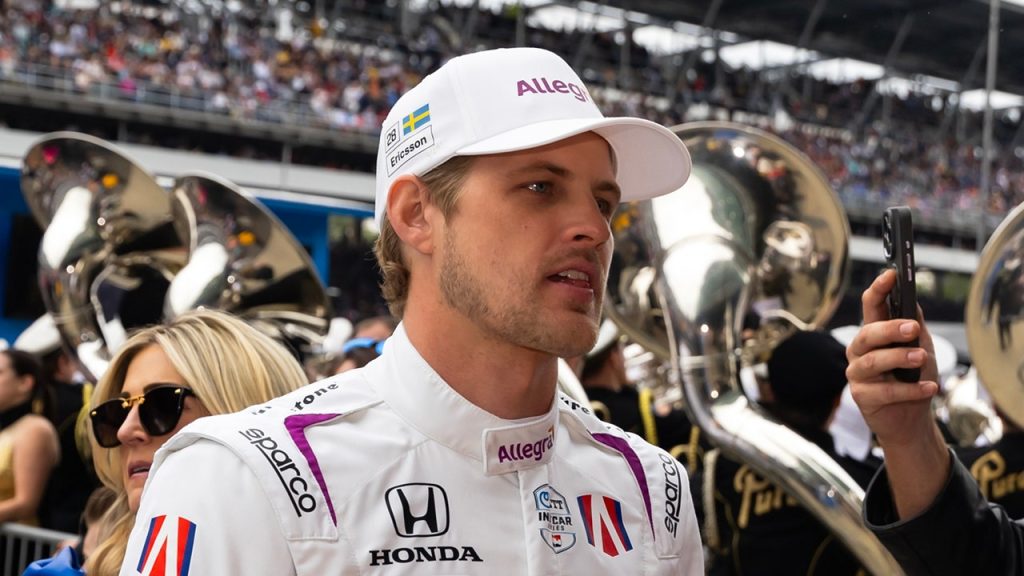In a dramatic turn of events at the Indianapolis 500, both Andretti Global drivers, Marcus Ericsson and Kyle Kirkwood, faced disqualification after their vehicles failed post-race technical inspections. Ericsson, who initially secured second place behind Alex Palou, has now been relegated to 31st, while Kirkwood slipped from sixth to 32nd. The disqualifications, attributed to modifications made to the cars’ Energy Management Systems, have raised significant questions about compliance with IndyCar regulations and the ramifications for the teams involved.
| Article Subheadings |
|---|
| 1) Post-Race Inspection Outcomes |
| 2) Financial Implications of the Disqualifications |
| 3) Reactions from the Teams |
| 4) Championship Points at Stake |
| 5) Looking Ahead: Team Strategies |
Post-Race Inspection Outcomes
During the Indianapolis 500, both Andretti Global drivers faced disqualification due to their cars failing post-race technical inspections. Marcus Ericsson finished the race in second but was demoted to 31st place after officials determined that modifications were made to the Energy Management System covers. The series regulations, which stipulate that these components must remain as supplied by Dallara, the chassis provider, played a crucial role in the decision. Similarly, Kyle Kirkwood also found his vehicle deemed non-compliant, pushing him down from a sixth-place finish to 32nd. The actions taken were in alignment with the series’ adherence to regulations designed to maintain fairness and competition integrity.
Financial Implications of the Disqualifications
The penalties resulting from the disqualifications have considerable financial consequences for both drivers and the Andretti Global team. This year’s Indianapolis 500 featured a record purse of $20,283,000, with the winner, Alex Palou, set to receive an impressive $3.8 million. Prior to the ruling, Ericsson was projected to secure around $1 million for his second-place finish, while Kirkwood would have garnered approximately $625,000. Instead, following the reallocation of their finishing positions, Ericsson will now take home $610,500, and Kirkwood around $607,500, reflecting a significant loss for both drivers. The disqualification also imposed a fine of $100,000 on each car, impacting the team’s budget further.
Reactions from the Teams
Following the developments, Andretti Global expressed disappointment but also a commitment to address the situation. A statement read,
“We are in receipt of the Indianapolis 500 Post-Race Notice as provided by IndyCar. We are taking the necessary time to assess the information and we will be requesting a full review with IndyCar.”
The sentiment resonates with the expectation that a full investigation will allow the team to understand the implications better and prevent future occurrences. Fellow driver Kyle Kirkwood expressed his intent to uphold the team’s values of sportsmanship and integrity, emphasizing the importance of learning from the incident and moving forward effectively.
Championship Points at Stake
The disqualifications not only affected financial standings but also had repercussions on the championship points awarded for the race. Each driver loses the championship points associated with their original finish, instead being credited with the points allocated to their disqualified standings. This adjustment threatens to alter the competitive landscape of the ongoing season, as every point can significantly impact the overall championship standings. The overall strategic positioning of Andretti Global may now be compromised, challenging their prospects as they move through subsequent races.
Looking Ahead: Team Strategies
As the series progresses, Andretti Global will need to revise their strategies following these unexpected setbacks. With the next race scheduled on the streets of Detroit rapidly approaching, the team must ensure compliance with regulations while refining their performance. The penalties incurred serve as both a learning experience and a cautionary tale for the team regarding the importance of adhering to the technical specifications set forth by IndyCar. Strengthening communication and operational strategies across their team would be essential in mitigating future risks and maintaining their competitiveness in the series.
| No. | Key Points |
|---|---|
| 1 | Both drivers from Andretti Global were disqualified after failing post-race inspections. |
| 2 | Financial implications include substantial fines and reduced prize money. |
| 3 | Teams expressed disappointment but are committed to understanding the ruling. |
| 4 | Loss of championship points may alter the competitive landscape going forward. |
| 5 | Plans for enhanced adherence to technical regulations are underway for upcoming races. |
Summary
The disqualification of Marcus Ericsson and Kyle Kirkwood has cast a shadow over what was expected to be a celebratory post-race moment for Andretti Global. These events not only undermine their performance in the 109th running of the Indianapolis 500 but also highlight the critical importance of strict compliance with racing regulations. Going forward, Andretti Global must take decisive action to rectify these issues and reinforce a commitment to competitive and technical integrity.
Frequently Asked Questions
Question: What led to the disqualification of Ericsson and Kirkwood?
The disqualification resulted from both drivers’ cars failing post-race technical inspections, specifically regarding modifications to the Energy Management System covers, which are required to remain as supplied by the chassis provider, Dallara.
Question: How did the disqualifications impact the prize money for the drivers?
Due to the disqualifications, both drivers received significantly reduced prize money. Marcus Ericsson, originally set to earn about $1 million for second place, will now receive around $610,500 for finishing 31st, while Kyle Kirkwood will earn approximately $607,500 for his 32nd position.
Question: What are the potential repercussions for the Andretti Global team?
The repercussions include financial fines imposed on the team, loss of championship points, and a need to reassess their strategies and compliance protocols to avoid similar issues in future races.


